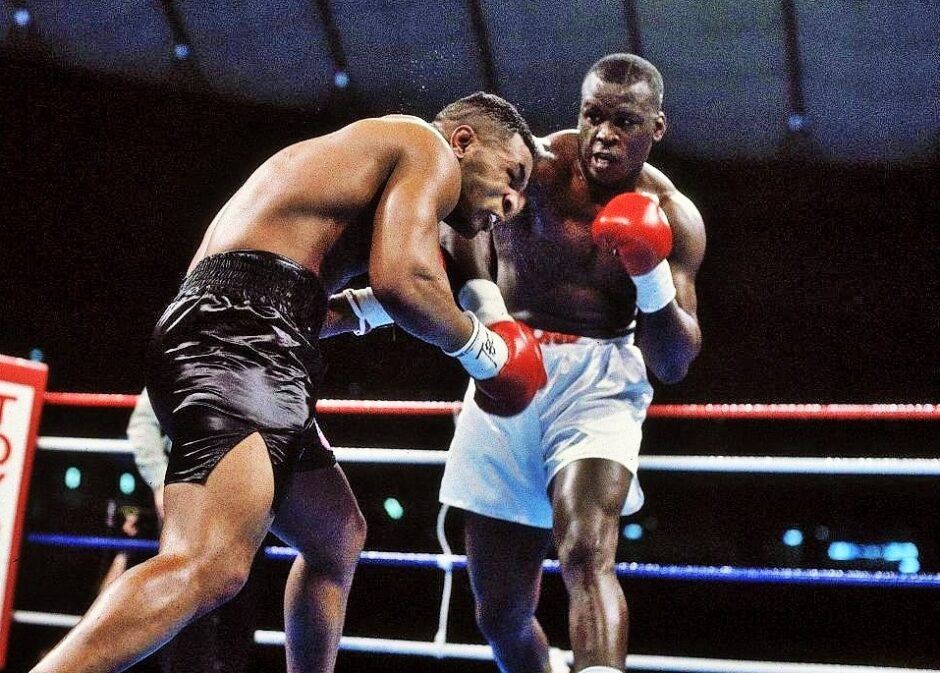

We partied like really, really, really hard. The opinion has been shared by other personalities such as promoter Butch Lewis and sports journalist Jerry Izenberg who, in the documentary Mike Tyson – The Fallen Champ, famously remarked about Tyson’s new corner, “ They assemble a corner for that fight which looks like it was picked up out of the semi-finals of the Intercity Golden Gloves.”Īccording to an article published on Marca, in an interview, Brown revealed, “ We used to do crazy sh*t…but there was a time when we partied in Japan right before his fight with Buster Douglas. However, they went their separate ways after the fight against former champion Michael Spinks in 1988. The trainer who took over Tyson’s training after Cus D’Amato passed away in 1985 has long been accredited with his incredible success. According to HBO’s analyst and well-acclaimed sportswriter Larry Merchant, the primary reason for Mike Tyson’s lackadaisical performance in Tokyo Dome is parting ways with long-time trainer Kevin Rooney.


On the other hand, two familiar narratives often come up as reasons for his loss. After the fight, when asked for reasons for his win, Douglas replied, “ Because of my mother … God bless her heart,” as reported by nzherald. However, the setback, especially his mother’s loss, instead of sending him down the cliff, reeled him back in. If it was not enough, his son’s mother had suffered from a severe kidney problem, and he ran flu just a day before the battle. His mother, Lula Pearl, had passed away some twenty-three days before the fight. So what could have been the reason behind ‘Iron’ Mike’s terrible loss to James ‘Buster’ Douglas? What went wrong that day on February 11 at Tokyo Dome?ĭouglas, who has had a mixed-bag career till then, was going through some personal tragedies. The man, till then considered unbeatable, finally met his match and lost.

Other partners include Franklin University and MCS-T.O.U.C.H., a program that helps formerly incarcerated men and women gain life skills and find jobs.It was one of the biggest upsets in the history of boxing. Officials said Wednesday they hope to serve an additional 400 students with life skills coaching and mentoring services. Hottinger said they give long-overdue recognition to Douglas, as well as serving to inspire all Ohioans who face tough odds.Īmong the effort’s goals is to raise enough money for the Brightway Center, a Steubenville-based nonprofit serving at-risk youth, to expand its operations to central Ohio. It’s among several official actions that governments are taking to mark the anniversary. Jay Hottinger, a Newark Republican, said a bill establishing a “James ‘Buster’ Douglas 42-to-1 Odds Day” is moving through the statehouse. ESPN plans to air the documentary and send some of its personalities to participate in a celebratory gala in February. The Tyson-Douglas contest gained new attention with the release of an ESPN documentary, also titled “42 to 1,” in December. “I went into the fight only to win,” Douglas said Wednesday, “never knowing it would come out to be something as spectacular as it has been over the years.” He lost the title to Evander Holyfield that October. Douglas prevailed in a stunning upset over a man feared for his prowess in the ring and considered the best boxer in the world at the time. James “Buster” Douglas, a Columbus native, met Tyson, the reigning undisputed world heavyweight champion, in the ring in Tokyo on Feb. He said the bout proved “nothing is impossible if you possess iron will and great determination.” “The reason we’re still here today talking about Buster’s 42-1 upset fight with Mike Tyson is because it transcended sports,” said two-time Heisman Trophy winner Archie Griffin, a backer of the effort.
#JAMES BUSTER DOUGLAS VS MIKE TYSON SERIES#
COLUMBUS, Ohio - Buster Douglas will mark the 30th anniversary of his upset boxing victory over Mike Tyson with a campaign aimed at inspiring others who face long odds.ĭouglas, 59, joined organizers at the Ohio Statehouse Wednesday to announce a series of “42 to 1” events framed around his unlikely 1990 victory to raise funds for workforce development, diversity and self-help programs for at-risk youth.


 0 kommentar(er)
0 kommentar(er)
